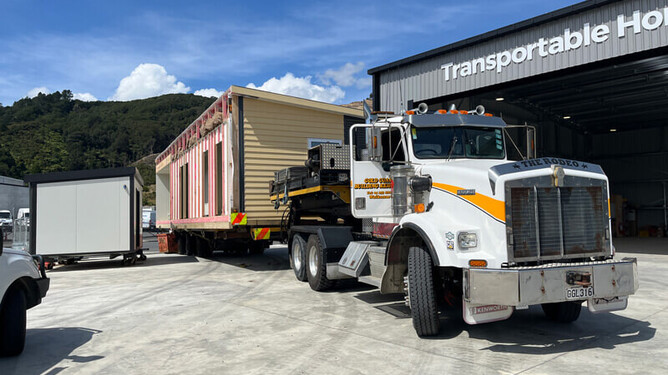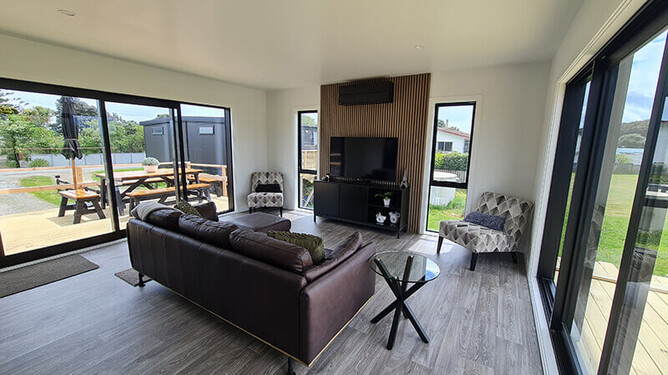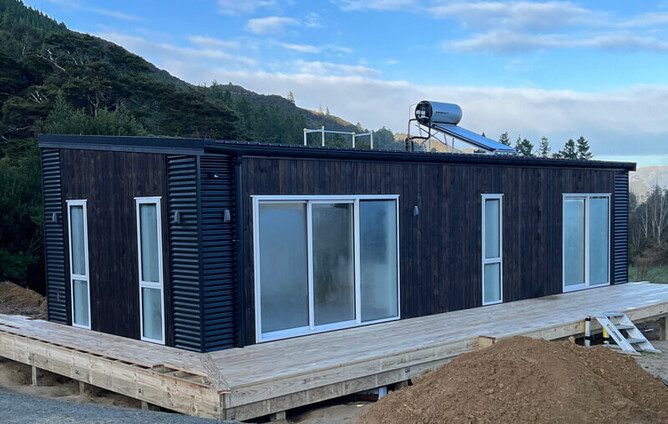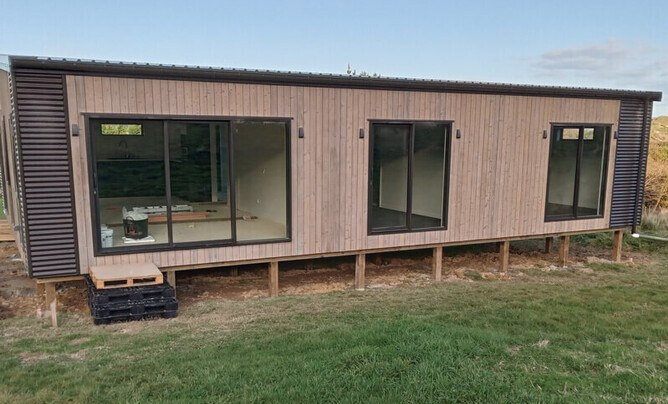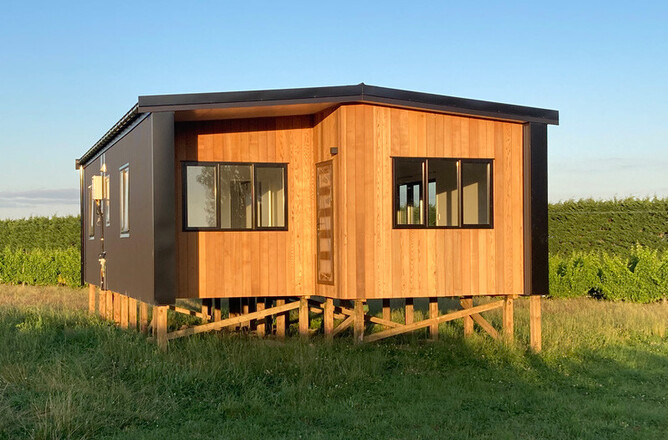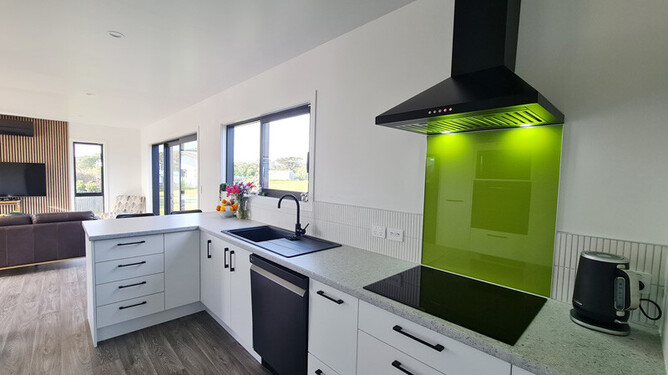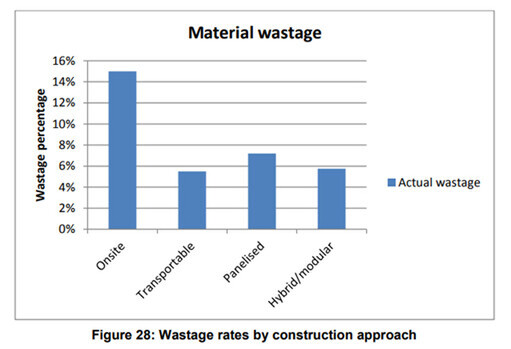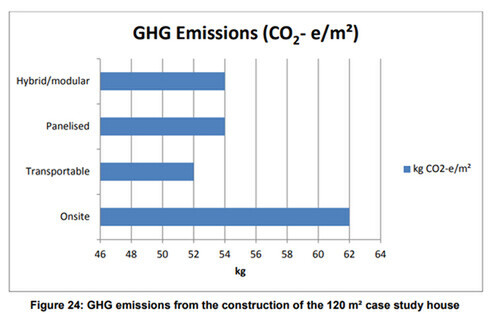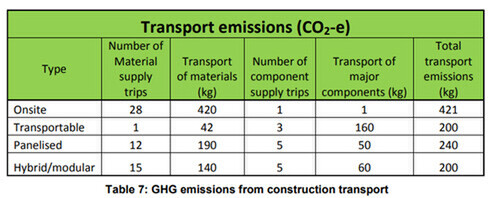Most people understand the importance of minimising carbon emissions and climate change, reducing waste and generally reducing the impacts of our way of life. All these things come under the umbrella term of ‘sustainability’.
While it’s easy to make changes to household recycling, or lowering carbon transport options, buying a house is a bit more complex when it comes to working out how sustainable the different options are.
Here at Able Spaces we are proud of how sustainable our prefabricated, transportable homes are, and like to think we are an active part of a circular local economy where our leftover building materials get reused and recycled with an absolute minimum eventually going to landfill as waste.
From our home designs to the materials we use and our build process, sustainability is at the core of our operations.
Prefabricated Transportable Homes Offer Big Benefits
Shifting from traditional onsite building methods to prefabricated, transportable homes offer many benefits to the environment as well as to Kiwi homeowners.
Some of these benefits are around cost savings, but many are related to general sustainability, which start during the design and construction stage of our homes and carry on while people are living in them.
Prefabrication is the key to allowing the design and construction sector to improve efficiency, effectiveness, productivity and sustainability. In a controlled environment it is possible to minimise material waste through careful use and re-use, and to achieve minimal construction tolerances to prevent energy loss (and reduce running costs).
Sustainable Design
The design of Able Spaces homes is where many of the sustainability benefits are locked in.
Compact Designs
Our homes use less material, need less heating and cooling and have smaller carbon footprints overall, than larger, traditional builds.
Small homes may seem easy to design, but the key is to create small homes that function optimally. This requires close care and attention during the design phase, something we take great pride in.
Designing for the Sun
Carefully balancing the number, size and placement of windows in each home is important. This ensures locking in benefits of heating from the sun in winter, without overheating in summer.
Future Proofing
Every home we build involves sitting down with our clients, and talking through and planning exactly what they want from their new home now and in the future. Water heating options, including solar, and whether they are going to want to add solar photovoltaic (electricity) panels to their home at any stage is part of this wider discussion. We ensure our clients preferences are factored into the design phase.
Sustainable Construction
This covers a large part of our operations, including what materials we use, how Able Spaces homes are put together, how much waste we generate and what happens to that waste.
It is estimated New Zealand’s construction and demolition industry makes up 40-50% of landfill waste. This large volume of waste creates a negative environmental impact, along with increased building costs to consumers.
Careful Material Choice
We use solid timber panels instead of plasterboard (plasterboard makes up 13% of traditional construction waste at landfill). Our panels reduce waste, add to building insulation and provide durable, low maintenance internal surfaces in all our homes.
Minimal Treated Timber
We use treated timber in our homes only where this is unavoidable. We partly achieve this by avoiding traditional timber frames, and partly through designing homes that are airtight, have good ventilation and don’t suffer from moisture issues inside walls.
Minimal Concrete Use
Concrete production requires a large amount of energy, and normally means large carbon emissions. Not building on concrete slabs, and wherever possible, using screw-in ground anchors, rather than concreted-in posts, means we use as little concrete as possible. The screw-in anchors have the additional benefit of simply unscrewing from the ground if the transportable home needs moving again later, leaving nothing in the ground.
Optimised Insulation
Our designs meet all the latest requirements for insulation in different parts of the country. All our homes have R2.5 in the floors, R2 in the walls and between R5 toR7 in the ceiling and thermally broken double glazed windows.
How insulation is installed is just as important as how much of it there is and in our factory, we go the extra mile to make sure all our insulation is installed perfectly.
Before the recent changes to building code insulation requirements, we were proud to offer above code insulation in our homes. We are currently looking at higher density insulation options that will once again allow us to offer above code insulation throughout the country.
Minimal Waste
Prefabricating in a workshop gives us much greater control of waste, and using the Durapanel system means we generate a lot less waste than traditional construction to begin with.
Wherever possible, we reuse building materials before we recycle, and we try to only use suppliers who supply recyclable products. Currently we recycle steel and aluminium, polystyrene, paper, cardboard. For products that we use and recycle often, like polystyrene insulation, we use the delivery trucks that would normally return empty to the factory, to take our offcuts back for recycling on their return journey.
We give offcuts of carpet and vinyl to our clients so they have replacement stock in case of any future damage to their homes. If our clients don’t want them, we give the pieces away or reuse them in Rentable Spaces rental cabins. We encourage our builders to take any leftover materials including cladding and offcuts for their own building projects at home.
We accumulate a lot of untreated timber dunnage. (Our materials arrive placed on top of the dunnage to stay dry off the ground and enable easy movement with a forklift.) The dunnage is either returned to the supplier or cut up and used for firewood by our contractors.
In the last twelve months alone, we have managed to halve the volume of waste our factory sends to landfill.
Reduced Travel
With all our construction happening in one conveniently located factory and finished houses going to site in one trip, we reduce the large number of car and truck trips that would normally go to and from a conventional building site. This minimises wear on our roads, as well as fuel use and carbon emissions.
Sustainable Living
When the new owners of one of our transportable homes moves in is when even more practical sustainability benefits shine.
Comfortable and Durable
Our homes are comfortable and pleasant to live in. Yes, they are smaller than many traditionally built new homes, but clever design means they work as well as larger homes, if not better.
The way they are built also means that they stay looking good for many years, with minimal ongoing maintenance needed. In comparison, many houses being built with conventional construction techniques need a lot of maintenance, start to look really tired after maybe ten years, and will need a full renovation regularly if people want to keep living in them.
Cheap to Run
While many people choose Able Spaces prefabricated homes for their great up-front value, owners quickly come to appreciate the savings they make on running costs year after year. With airtight construction, well installed insulation and clever solar design, our homes need less heating and cooling which saves money and reduces carbon emissions going forward.
Don’t Just Take our Word for it
In 2013 the BRANZ published a report on the impact of prefabrication on the local construction industry. Some of the findings from that report back up the Able Spaces approach to building.
Three key tables from the report demonstrate the sustainability of prefabricated homes. The first is the material wastage rates of different construction techniques.
The second looks at the total greenhouse gas emissions from building a 120 square metre sample house using different building techniques.
The last looks at the greenhouse gas emissions from the transport associated with different types of construction.
In all three cases, prefabricated, transportable construction comes out on top. Don’t just take our word for it though, the full BRANZ report can be read here.
Where to Next?
After a fairly recent move to a new location in Upper Hutt, we have our factory working how we want it to. We continue to look at what more we can do to improve sustainability further and have more ideas in the pipeline.
Customer feedback is part of this. Sometimes our clients make new discoveries for us, like this example, where a client requested a particular cladding. Derived from Scandinavia and sourced from sustainably managed forest, this particular cladding product is a thermally modified and rapidly renewable plantation material. This timber cladding is sealed by burning and requires less chemicals (not needing paint or stain). The charred timber simply requires nourishment with oil, which creates a superior finish and less forward maintenance. (No reapplication is needed for 5-10 years, as opposed to a more typical product like cedar, which requires re-staining every 2-3 years.) Additionally, the oil used on the product is a superior quality, containing an added hardener for extra durability. We sourced a local supplier of this charred timber product and now offer this cladding as an option in the build process.
Part of our current investigations include offering a range of woollen carpets to provide additional sustainable options (we use natural products wherever possible). We are currently also looking into installing rainwater tanks which will collect runoff from our factory roof. This will let us use our own water, rather than town supply, but more importantly, will let us slow down the water flowing from our roof into the storm water system during major rain events.
We are also pricing a solar PV system for our roof that will allow us to generate all our own electricity, further reducing the embodied carbon of the home that we prefabricate.
Case Studies: Showcasing Sustainable Transportable Home Projects
In our drive for continuous improvement, we are committed to monitoring our own performance and gathering feedback. You can read about our homes from the perspective of our clients in some recent case studies:
Are you ready to get in touch with us?
We love what we do and we look forward to getting you and your family into a warm, dry and cozy, affordable sustainable home. We also offer a kitset option for hard to reach sites. Talk to us today. Email sales@ablespaces.co.nz, or call 0800 277 233 for a no-obligation chat.
